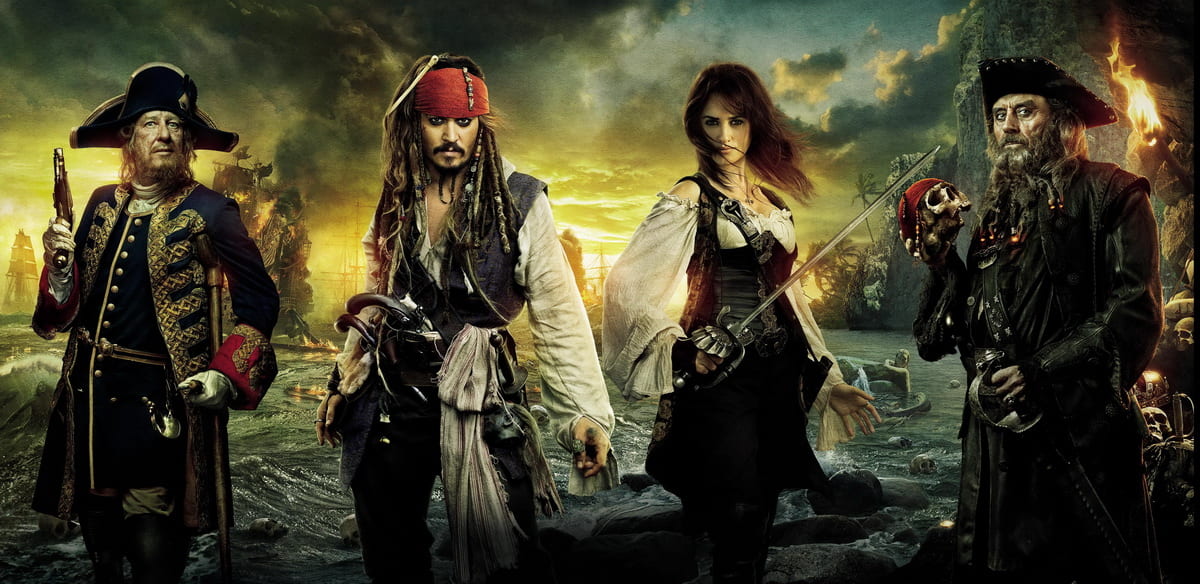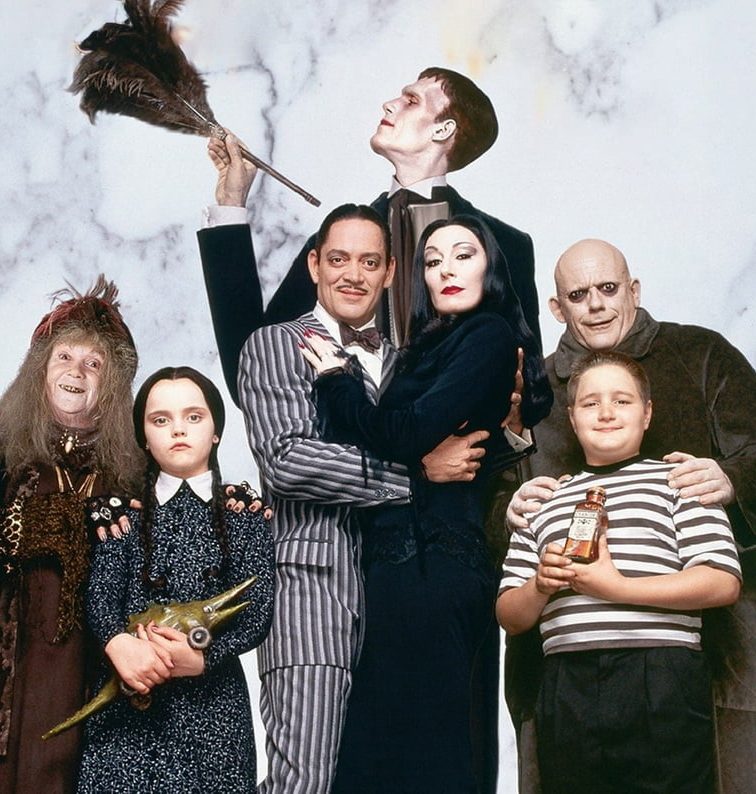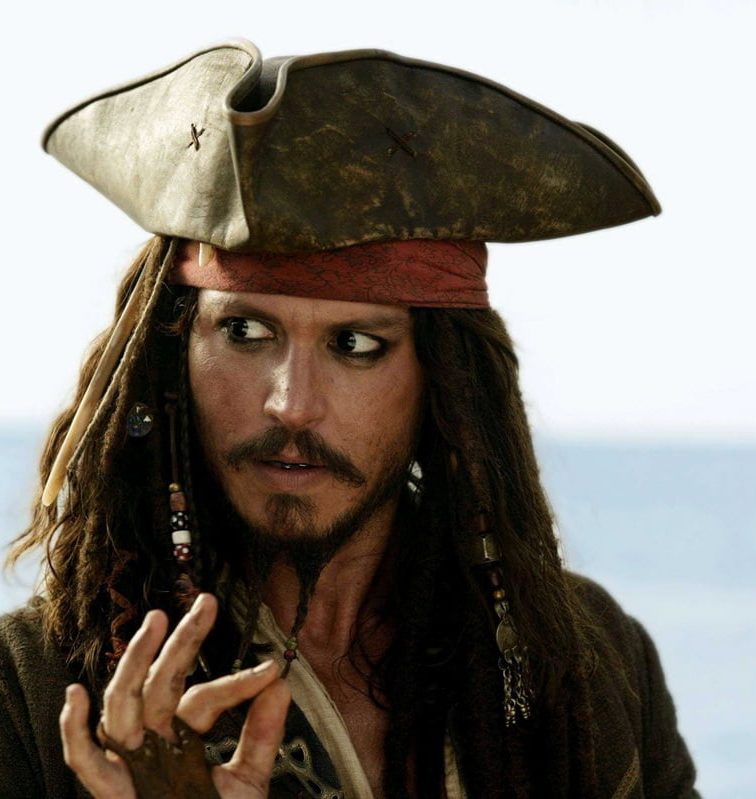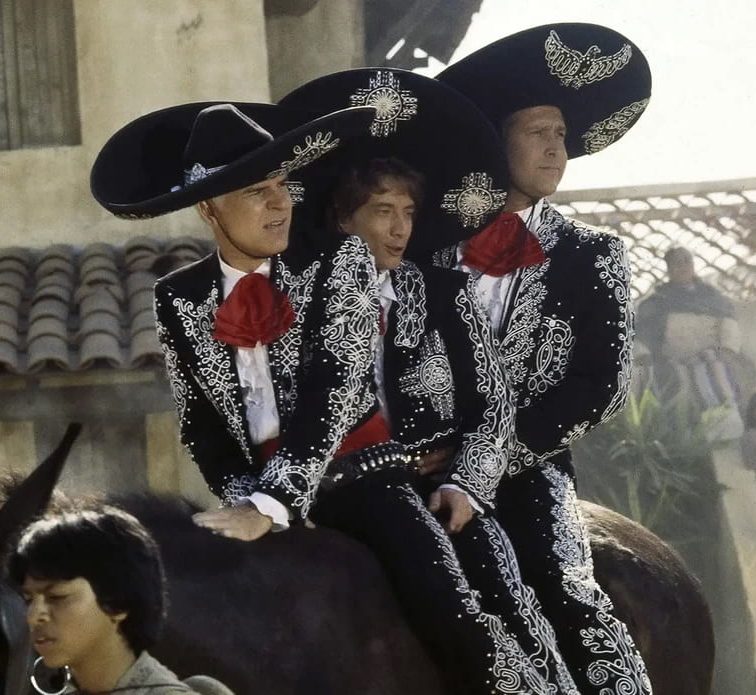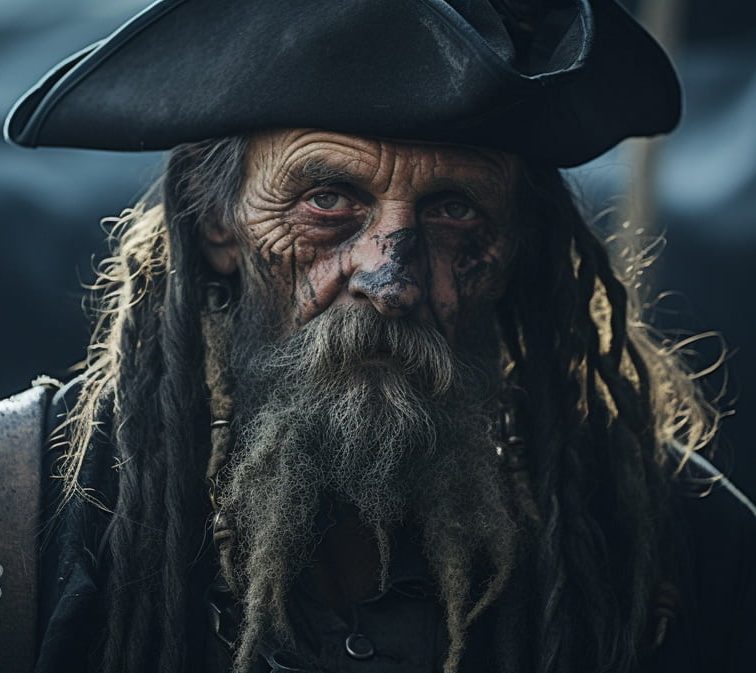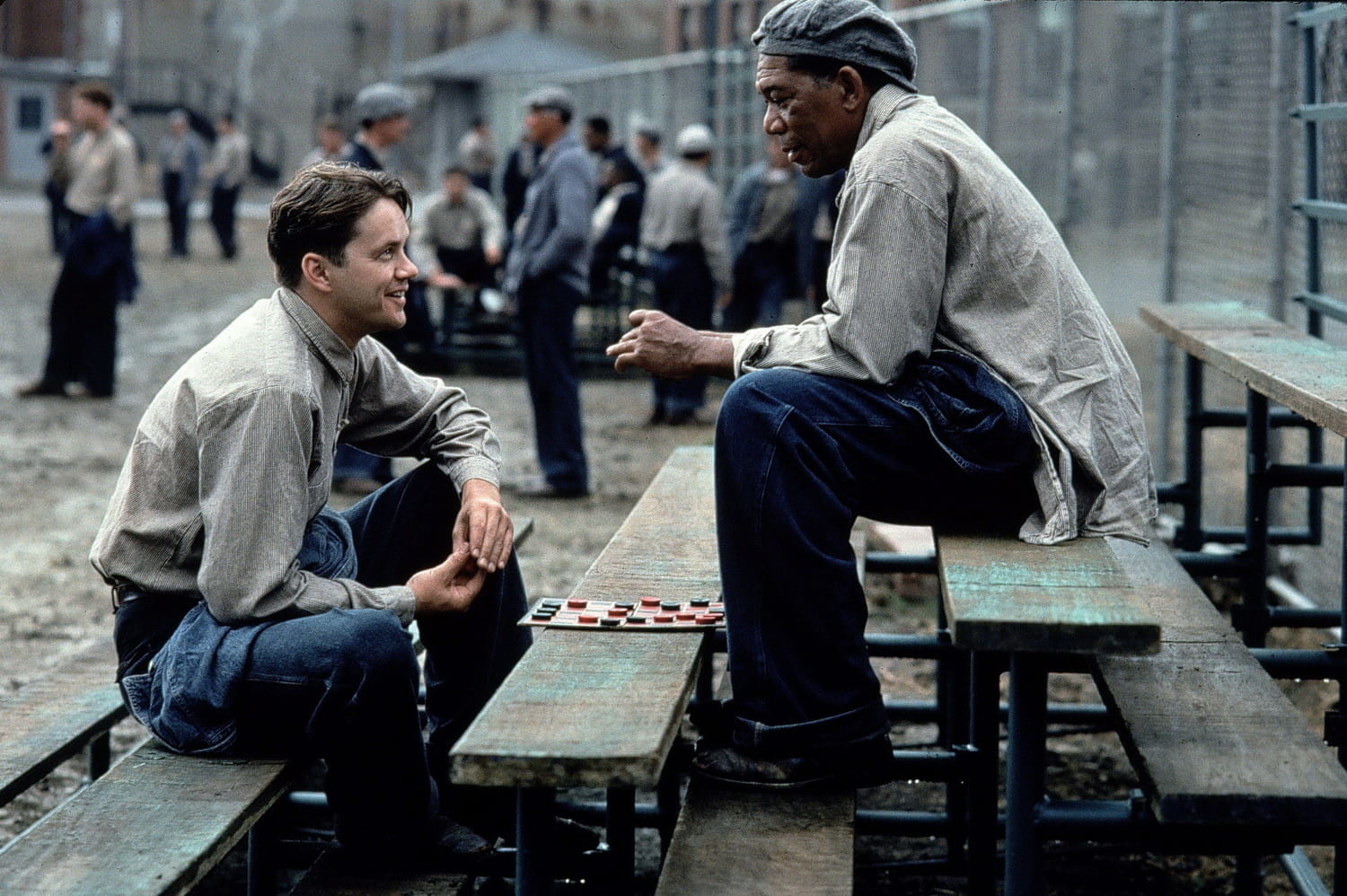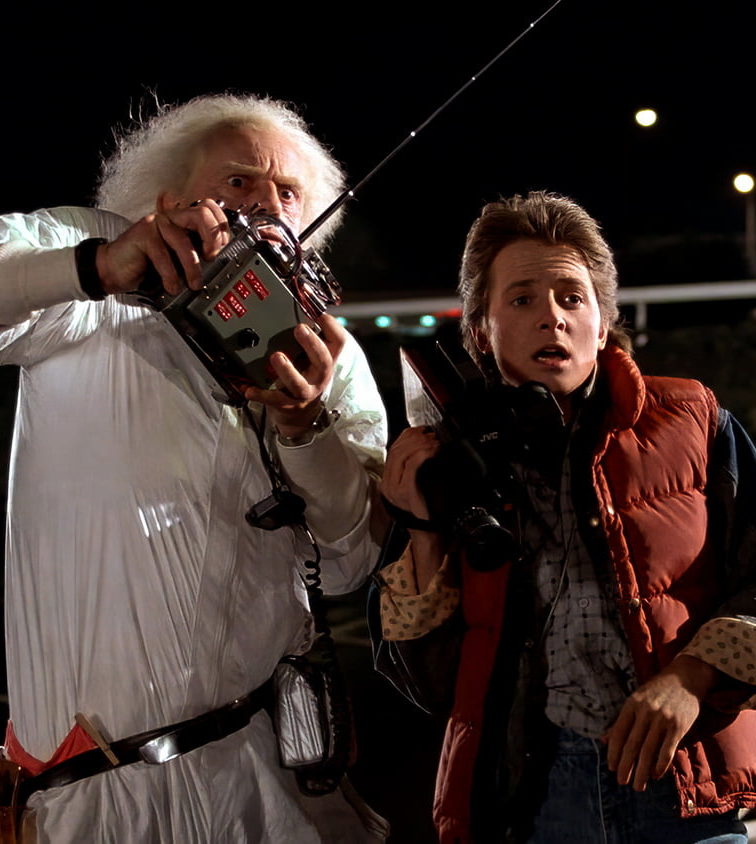Welcome aboard the journey through the ‘Pirates of the Caribbean’ franchise, where we unearth fascinating details and truths that anchor the series in a sea of historical intrigue and cinematic brilliance. It was 2003 when the first film, “The Curse of the Black Pearl,” not only resurrected the allure of pirate legends but also set a new standard for adventure on the high seas, grossing over $654 million worldwide. Beyond the box office, the series cast a spotlight on maritime history, with its authentic depictions of 18th-century shipbuilding techniques and the multicultural dialects of the pirate world.
It’s in these details—the cut of Jack Sparrow’s coat, the curve of a cutlass, the creak of the captain’s quarters—that the films bridge the gap between Hollywood fantasy and the golden age of piracy. Join us as we navigate through the franchise’s triumphs and trivia, where every fact is a piece of eight in the treasure chest of ‘Pirates of the Caribbean.’
1. The Curse of the Real Black Pearl
Believe it or not, the Black Pearl was not always the ghostly vessel we adore. Its inspiration, the Sunset, was a mere mortal ship before the film’s magic turned her into the Pearl. In 2003, this ship became the canvas for creating the supernatural icon, complete with billowing dark sails historically accurate to pirate lore, aiding their nocturnal escapades.
Did you know the Black Pearl’s design pays homage to real-life pirate ships which were often repurposed merchant vessels? And the curse? While Hollywood added the supernatural flair, the real curse for any pirate ship was the relentless pursuit by the world’s navies.
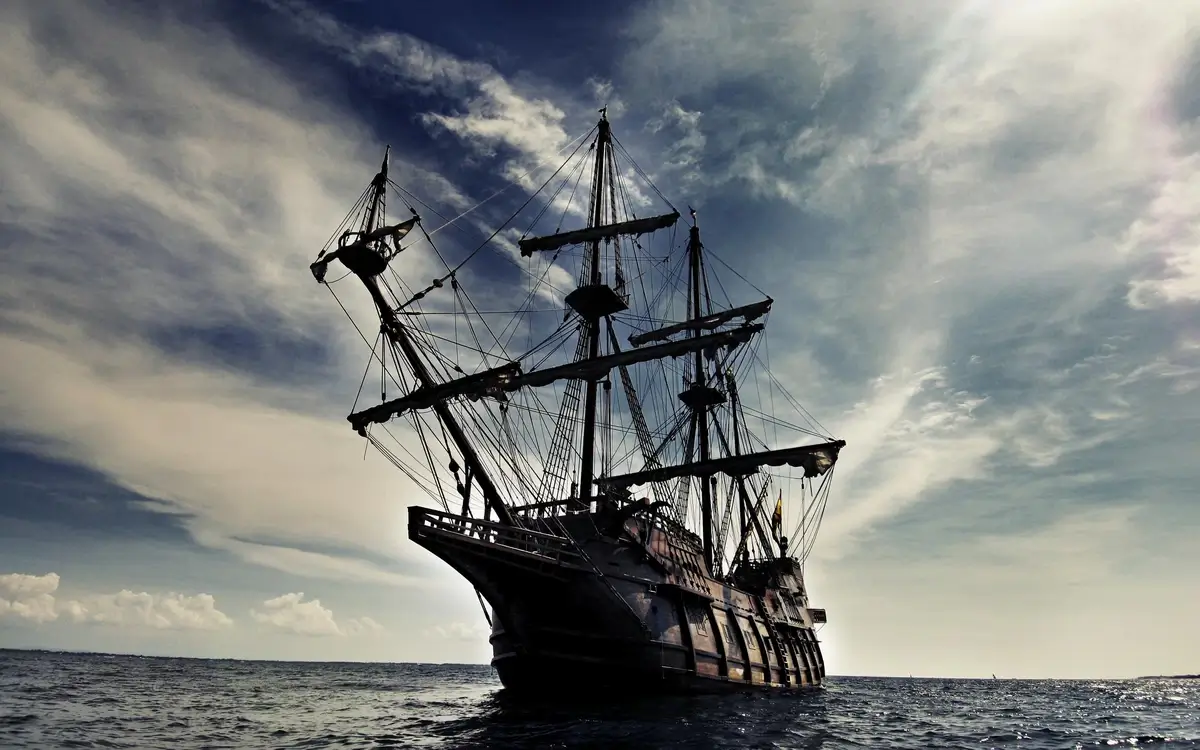
Image: wallpapercave.com
2. Johnny Depp’s Hand-Picked Sparrow
Johnny Depp’s portrayal of Jack Sparrow is a masterclass in character creation. Depp infused Sparrow with traits of rock stars and rogue charm, but not without basis. Sparrow’s look was inspired by actual pirate attire—loose-fitting for ease of movement aboard ship, accessorized with trinkets that were often spoils from their conquests.
Depp’s commitment went beyond the costume; he even insisted on wearing real gold teeth, some of which he kept post-filming. His dedication to authenticity brought a character to life that transcends the films themselves, becoming a symbol of the pirate genre.
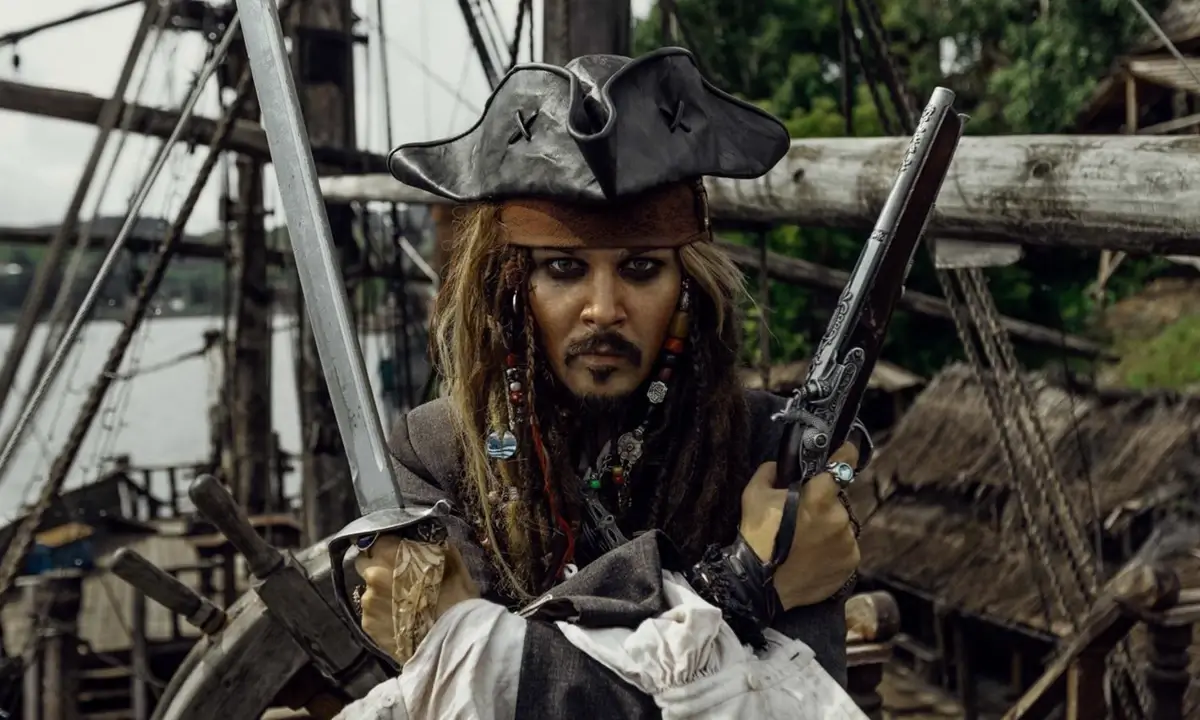
Image: worldcosplay.net
3. The Hidden Mickey on the Seas
Disney’s penchant for “Hidden Mickeys” sails into “Pirates of the Caribbean,” with the emblem discreetly placed throughout the series. This quest for hidden Mickeys is not just a game; it’s a tradition that dates back to the early days of Walt Disney theme parks, where Mickeys would be concealed within attractions for sharp-eyed visitors.
In the films, these Mickeys are not merely for show but are carefully integrated into the set design, paying tribute to the Disney legacy while also offering a nod to the observant fans. Spotting them has become a beloved pastime, enhancing the viewing experience with a touch of the scavenger hunt.
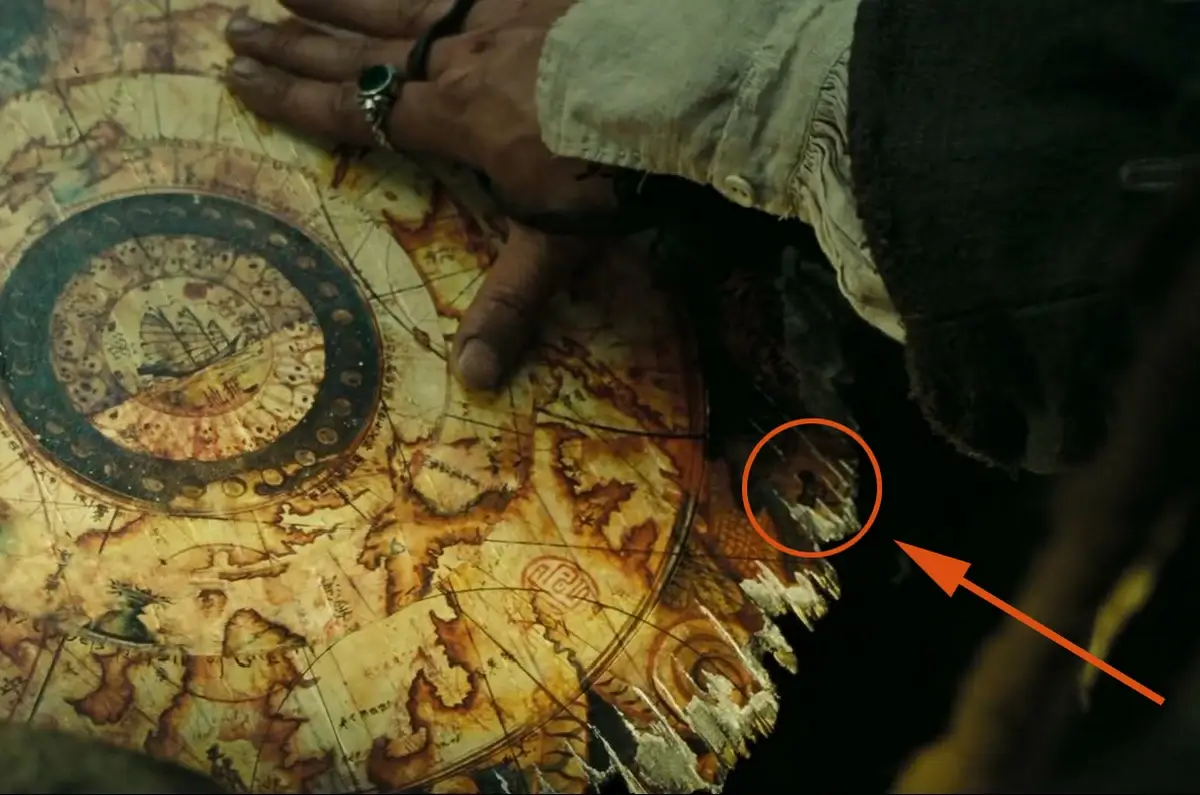
Image: iFunFact
4. A Rollicking Shipwright’s Secret
The shipwrights behind the scenes were the unsung heroes of “Pirates of the Caribbean,” crafting vessels that looked as though they’d weathered many a storm. The ships were not only movie props but also feats of engineering. For instance, the ship Queen Anne’s Revenge, featured in “On Stranger Tides,” was actually a meticulously altered version of the Sunset, the ship used for the Black Pearl. The attention to historical detail is such that shipwrights studied 18th-century ship blueprints to ensure authenticity.
Moreover, these shipwrights harbored a secret: the vessels were made to be dismantled and rebuilt, allowing for easier transportation between filming locations. Their craft mimicked the ingenuity of actual Golden Age shipwrights, who often hid weapons and extra rigging in plain sight, a tradition subtly honored in the films.
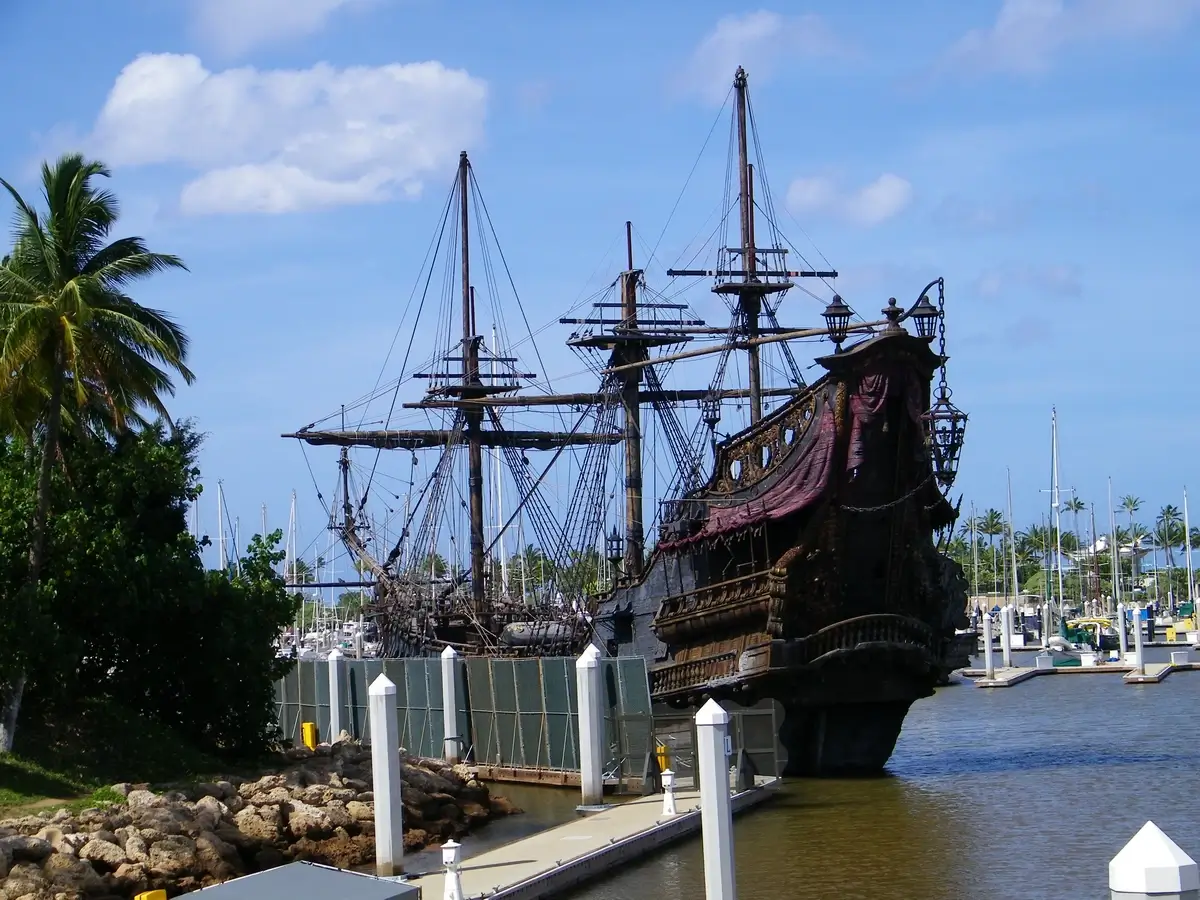
Joel / Flickr
5. The Sword Master’s Legacy
Bob Anderson was not just a sword master; he was a cinematic legend, having choreographed fights for films like “Star Wars” and “The Lord of the Rings.” In “Pirates of the Caribbean,” he brought his swashbuckling expertise to the fore, instructing the cast in the cut-and-thrust of pirate swordplay, which was less about finesse and more about function. Historical accounts suggest pirates favored the cutlass due to its short, curved blade, ideal for the close combat of naval boarding actions – a fact that Anderson’s choreography mirrors with precision.
The commitment to authenticity in the duels was such that the actors underwent months of training. The result was a dance of blades that not only looked real but felt inherent to the pirates’ rough-and-tumble lifestyle.
6. Ghostly Whispers of the Flying Dutchman
The legend of the Flying Dutchman is steeped in nautical folklore, said to be a ghost ship doomed to sail the oceans forever. The series brings this myth to life with its own Flying Dutchman, captained by the cursed Davy Jones. While the ghostly whispers and eerie organ music of Jones’s ship are the works of cinematic sound design, the legend itself dates back to the 17th century, with sightings reported by sailors for hundreds of years.
The film’s depiction, with its crustacean-covered hull and phantasmal crew, draws from these maritime tales, adding a layer of supernatural dread that has captivated audiences and bolstered the myth’s enduring legacy.
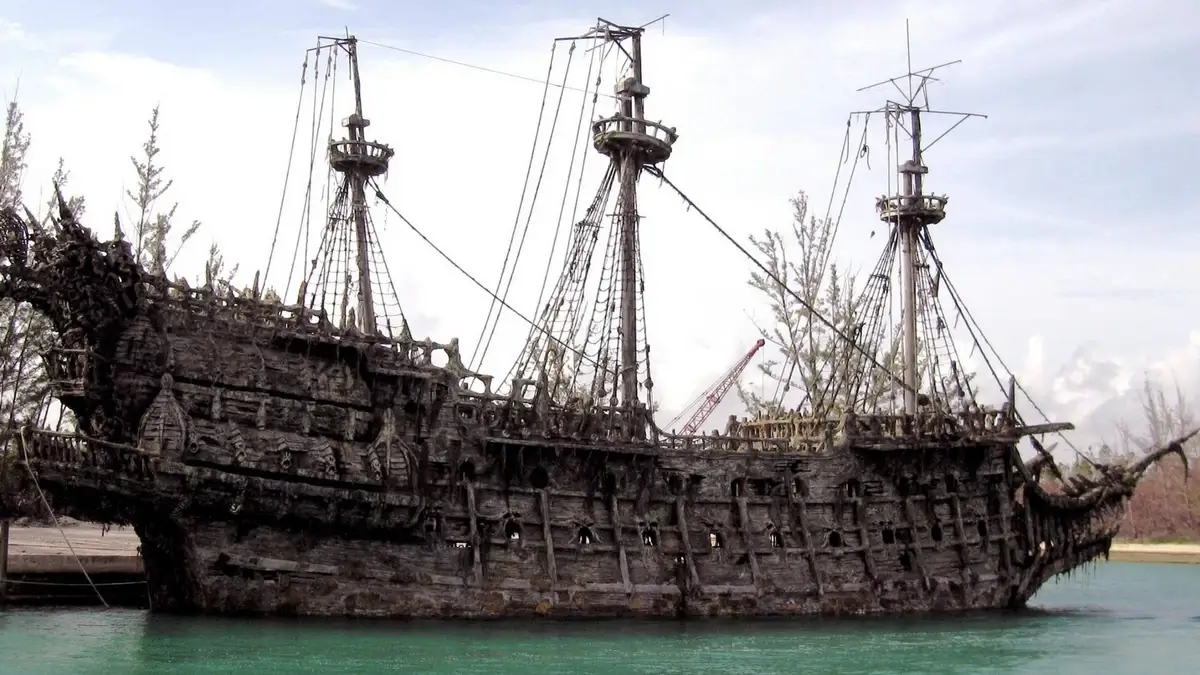
Image: wallpapers.com
7. The Compass That Doesn’t Point North
Jack Sparrow’s compass, which doesn’t point north, is a key plot device in the films, but it also has a basis in actual navigational history. Early mariners relied on the lodestone, a naturally magnetized piece of mineral magnetite, which was a primitive form of the compass. Unlike modern compasses, these early versions did not always point directly north due to local magnetic variations.
The compass in the films, said to point to what you want most, is a clever twist on this concept, blending historical navigation tools with the fantasy element that is central to the series’ charm.
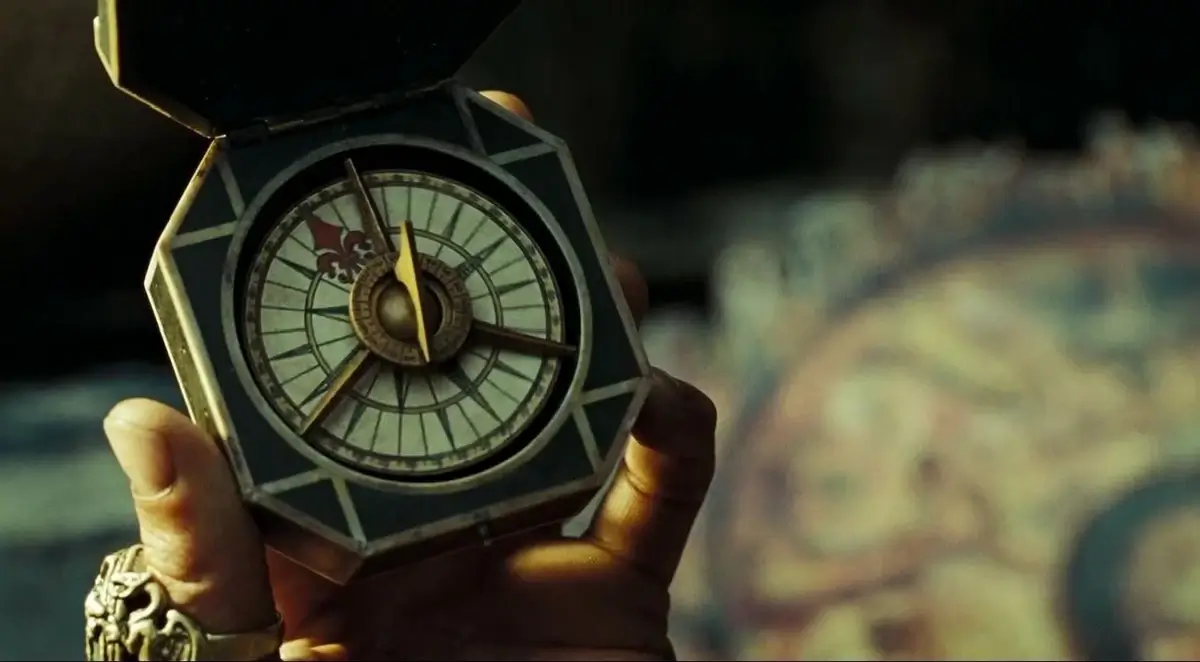
Image: wallpapercave.com
8. Johnny Depp’s Sparrow Gambit
Johnny Depp’s unique take on Jack Sparrow, complete with slurred speech and rockstar swagger, nearly walked the plank when Disney execs considered his portrayal too outlandish. Rumors swirled of potential firing, leaving Depp’s vision for the character in jeopardy.
Despite the backstage turmoil, Depp’s Sparrow emerged as the heart of the franchise, earning him an Oscar nomination and solidifying his character in film history. A pirate’s life for Depp indeed, as he turned what was nearly a shipwreck into box office gold.
9. Treasures of the Ocean’s Depth
The “Pirates of the Caribbean” series is renowned for its treasure-laden tales, mirroring the real historical frenzies over sunken riches. The quest for underwater treasure is not just a fabric of fiction; it’s inspired by countless real-world expeditions to recover lost wealth from the ocean floor. The 1715 Treasure Fleet, a convoy of Spanish ships laden with gold and silver from the New World that sunk off the coast of Florida, is one such example that fuels our fascination with underwater treasures.
The film franchise captures this allure with its stunning visual effects, creating underwater scenes where the ocean floor is strewn with the glint of gold – a sight that has driven adventurers and dreamers for centuries.
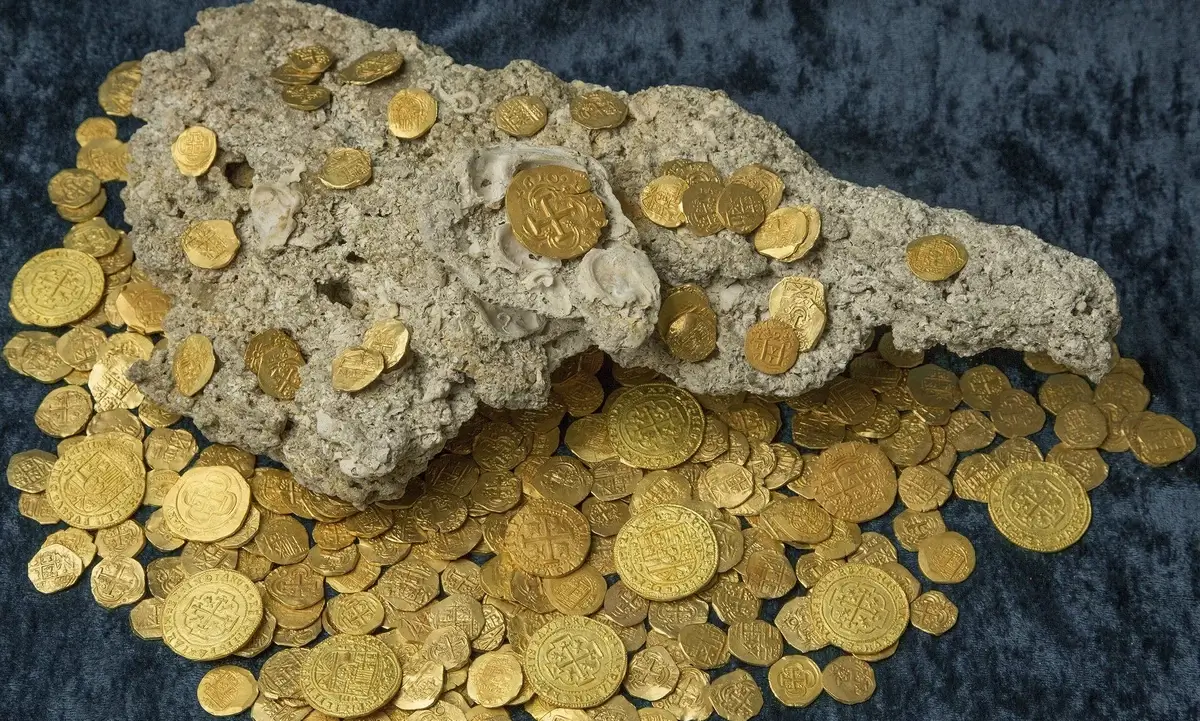
Image: pinimg.com
10. A Pirate’s Tale in Numbers
The “Pirates of the Caribbean” franchise isn’t just a cinematic legend; it’s a gold mine. The first film, “The Curse of the Black Pearl,” grossed over $654 million worldwide, anchoring itself deeply in the hearts of viewers. This was only the beginning; the entire series has hoarded a treasure chest that, as of November 2023, amounts to over $4.5 billion globally.
These figures are not just numbers but a testament to the series’ cultural impact. Imagine every coin in the pirates’ loot representing a fan who’s been enthralled by the saga, and you begin to grasp the enormity of its legacy.
11. From Disneyland to the Big Screen
It’s a voyage from theme park ride to cinematic icon. “Pirates of the Caribbean” began as a beloved Disneyland attraction, which opened in 1967. This ride was the last attraction that Walt Disney himself participated in designing, debuting just three months after his death. It has since become a hallmark of Disney parks worldwide.
The transition from ride to film wasn’t just a change of medium; it was an expansion of lore. The characters and settings from the simple boat ride have been fleshed out into a rich narrative that spans five movies, each adding layers to the story first glimpsed among the animatronic buccaneers of Disneyland.

Image: ocregister.com
12. The Symphony of the High Seas
When Klaus Badelt, bolstered by Hans Zimmer’s musical genius, composed the score for “The Curse of the Black Pearl,” they weren’t just creating a soundtrack; they were crafting an anthem for the modern-day pirate. The now-iconic theme, known as “He’s a Pirate,” is as integral to pirate lore as the Jolly Roger itself. Conceived in the early 2000s, the score has since become synonymous with adventure on the high seas, embodying the spirit of freedom and rebellion that defines the pirate world.
This music doesn’t just capture the essence of the characters; it reflects the very soul of the sea—a feat not achieved since the days when sea chanteys ruled the waves. Those chanteys, historically sung to keep the rhythm during laborious tasks aboard ship, date back to at least the mid-16th century, and their influence can be felt in the pulsing beats of the film’s score. The soundtrack, much like the chanteys, is not mere background music; it’s a character in its own right, setting the tempo for sword fights, treasure hunts, and daring escapes.
13. Captain Jack’s Real-Life Counterpart
Captain Jack Sparrow, portrayed with such memorable flair by Johnny Depp, might seem like pure fiction, but his character has roots in reality. The flamboyant pirate was inspired by the legendary privateer Captain Jack Ward, a 16th-century English sailor who converted to Islam and became a feared corsair in the Mediterranean. Ward was known for his cunning and successful raids, and much like Sparrow, he was an eccentric figure, feared and somewhat admired by his contemporaries.
Sparrow’s mannerisms, however, are entirely Depp’s creation, resulting in a character that blends historical piracy with a modern twist of charisma and humor.
14. The Authentic Sound of Pirate Instruments
The musical landscape of “Pirates of the Caribbean” is not only memorable for its melodies but also for its authentic instrumentation. To create a sound true to the Golden Age of Piracy, the composers incorporated instruments that would have been commonplace during the era, such as the harpsichord, accordion, and fiddle. These instruments, meticulously selected for their historical significance, add a layer of authenticity to the films’ atmosphere, echoing the music heard in 17th and 18th-century taverns and ships.
The harpsichord, dating back to the Renaissance, was a precursor to the piano and was favored for its distinctive, plucky sound, reminiscent of the bustling ports and markets where pirates would trade and carouse. The accordion, a more portable instrument, often accompanied sea shanties and dances, providing a hearty and full-bodied accompaniment that could be heard above the roar of the sea. The fiddle, with its lively and soulful tunes, was a staple in creating the jovial and sometimes ominous moods that color the pirates’ gatherings.
By weaving these instruments into the film’s score, the music of “Pirates of the Caribbean” becomes a time machine, transporting listeners to the deck of a pirate ship where the pulse of pirate life is felt through every note.
15. Will Turner: The Swordsmith’s Craft
Will Turner, portrayed by Orlando Bloom in the “Pirates of the Caribbean” series, is known not for his archery but for his swordsmanship. The character is introduced as a skilled blacksmith and throughout the series, his expertise with swords is a central part of his identity. In preparation for the role, Orlando Bloom practiced extensively with sword masters to ensure his portrayal reflected the elegance and precision of a seasoned swordsman.
Historically, blacksmiths like Will Turner were essential in pirate and naval lore. The blacksmiths forged and maintained the weapons that were vital to survival and combat at sea. The swords used in the films were designed to be period-appropriate, resembling those used during the early 18th century. These weapons included cutlasses, smallswords, and naval sabers, each chosen for their historical and functional accuracy.
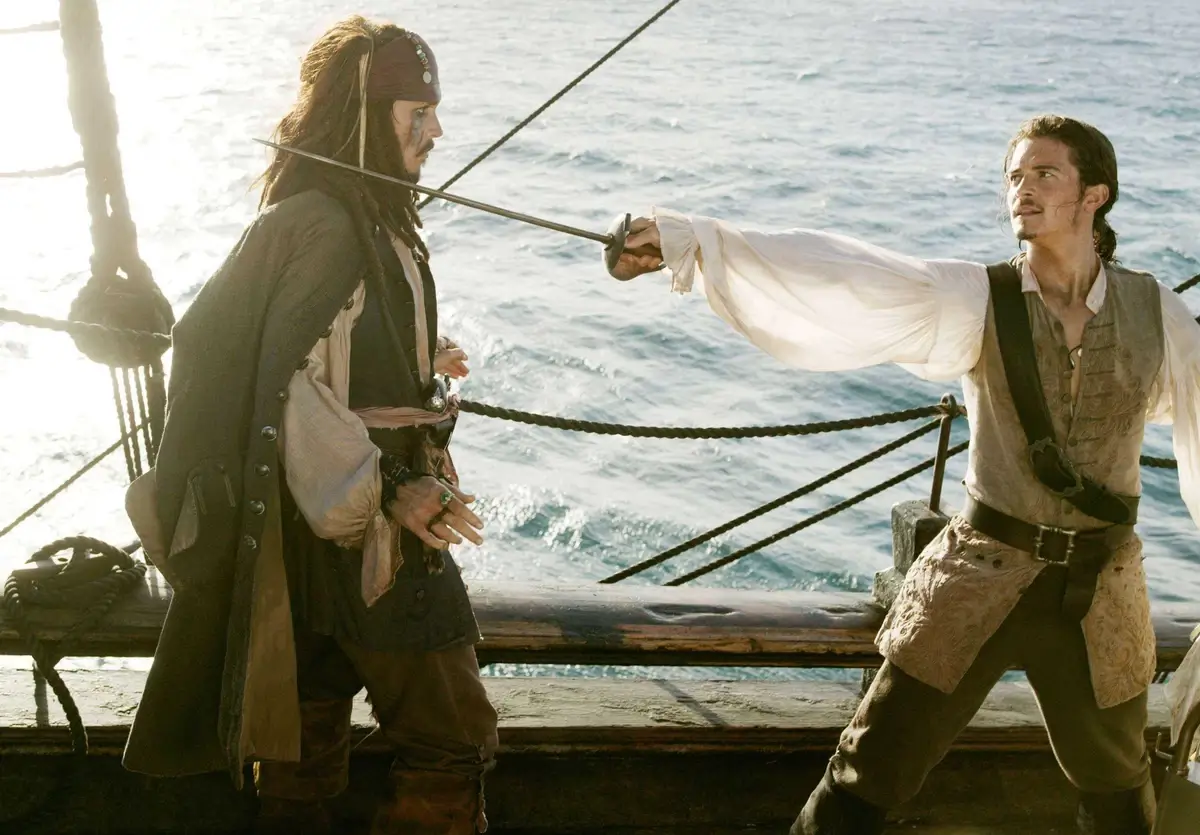
Image: mobimg.b-cdn.net
16. The Animal Actors of the Caribbean
The “Pirates of the Caribbean” films featured a menagerie of animal actors, from the mischievous capuchin monkey Jack to the stoic sea turtles that Captain Jack Sparrow used as a raft. These animal actors were trained extensively to perform their scenes, adding to the films’ charm and authenticity. The capuchin monkey, in particular, became an emblematic character of the series, beloved for its antics and connection to the mythical curse of the Aztec gold.
These furry and feathered performers were not mere background props; they were integral to the story, reflecting the animals’ roles in actual pirate lore as pets, symbols of luck, and, at times, essential for survival.
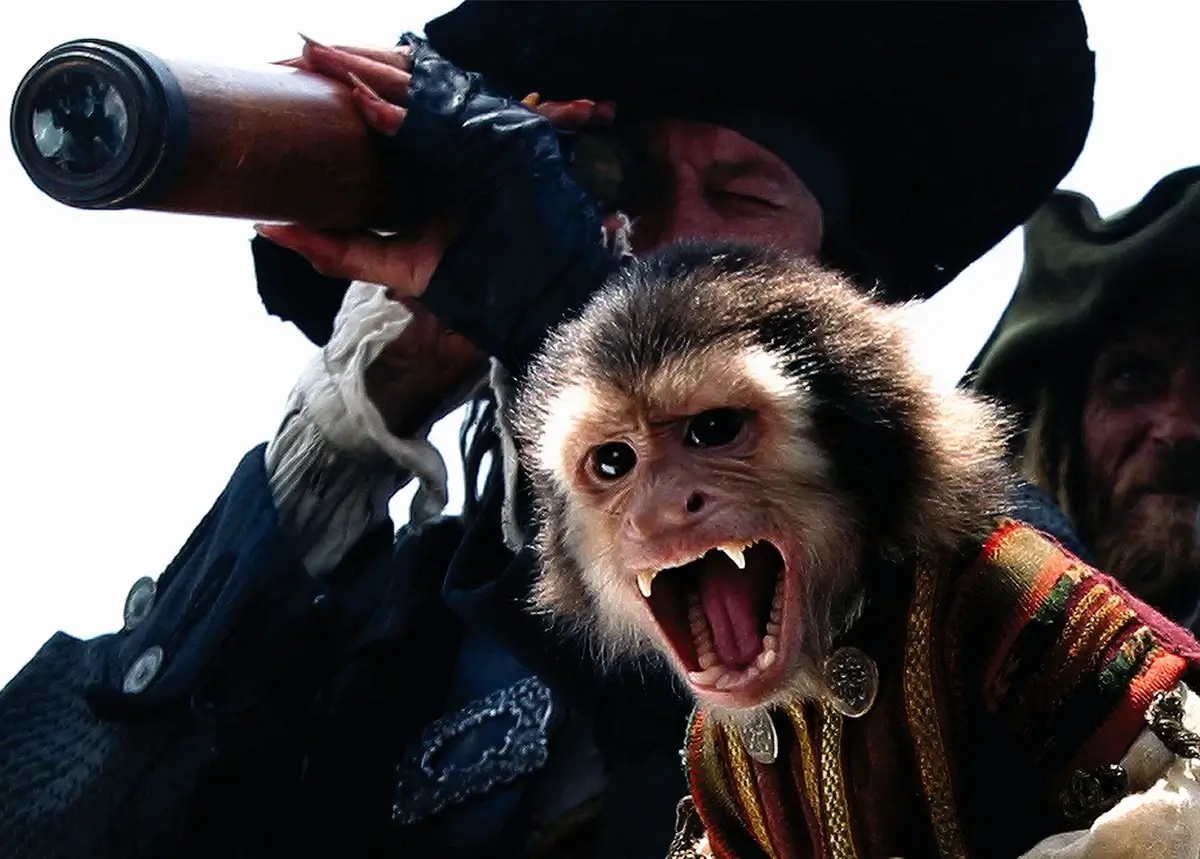
Image: assets.4cdn.hu
17. On Stranger Tides’ Record Treasure
The fourth installment, “On Stranger Tides,” cost a king’s ransom of $379 million, making it the most expensive film ever produced. This financial odyssey reflects the grand scale of the franchise, with its elaborate sets and high seas escapades.
The investment paid off, as the movie sailed past a billion dollars at the box office. It’s a testament to the enduring appeal of pirate lore, proving that audiences are willing to follow where the compass leads, even on the most extravagant voyages.
18. Keira Knightley’s Ageless Role
Keira Knightley was just 17 years old when she first stepped into the role of Elizabeth Swann, a character that would grow to be a formidable pirate in her own right. Knightley’s portrayal was noted for its evolution from a governor’s daughter to a pirate king, challenging the period’s gender norms. Her character’s journey was emblematic of the strength and determination found within the historical accounts of female pirates like Anne Bonny and Mary Read.
As Elizabeth Swann, Knightley brought a sense of timelessness to the role, her youthful appearance belying the depth and resilience of her character, a nod to the ageless spirit of adventure that “Pirates of the Caribbean” celebrates.
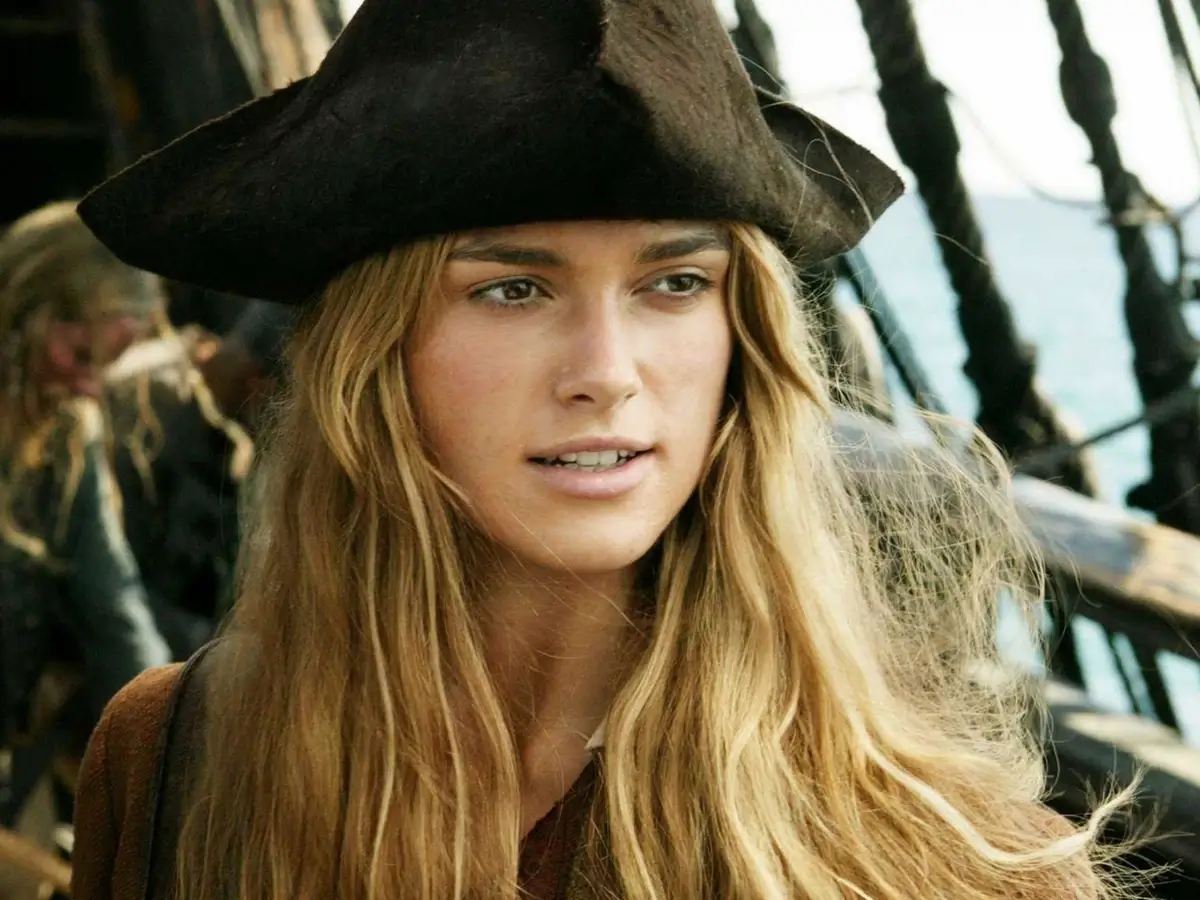
Image: picsofcelebrities.com
19. The Art of Pirate Costumes
Costuming in “Pirates of the Caribbean” does more than dress the set; it tells a story. Jack Sparrow’s trinkets, for instance, are culled from his adventures, each piece with its own backstory. The costumers sourced authentic materials and aged them to reflect the wear and tear of pirate life.
Elizabeth Swann’s dresses chart her journey from aristocracy to piracy, growing less structured as she embraces life on the high seas. The costumes are a patchwork of historical accuracy and narrative symbolism, showcasing the characters’ evolution throughout the series.
20. The Maelstrom’s Visual Symphony
In “Pirates of the Caribbean: At World’s End,” the visual effects team, led by the experts at ILM, faced their greatest challenge in crafting the colossal maelstrom scene, a testament to their mastery of CGI. The creation of this monstrous whirlpool was a complex endeavor, blending advanced water simulation techniques with rigorous computational processes.
This scene, taking over five months to perfect, showcases the intricate dance of physics and artistry, presenting a spectacle that transcends traditional effects to bring the mythic chaos of a pirate’s world to life.
21. Portrayal of Pirate Life in ‘Pirates of the Caribbean’
While “Pirates of the Caribbean” is known for its fantastical storytelling, it does incorporate elements that are historically accurate to the Golden Age of Piracy. The films accurately depict some of the pirate garb, ship designs, and the bustling life of ports like Port Royal and Tortuga, which were notorious havens for pirates in the 1700s. The portrayal of these elements gives viewers a glimpse into the pirate era, even amidst the films’ more fictional narratives.
However, the films also notably sanitize the harsh realities of pirate life to create a family-friendly adventure. The true pirate existence was often brutal and short, marked by disease, violence, and the stark conditions of maritime life. “Pirates of the Caribbean” chooses to focus on the allure and romance of the pirate legend, while series like Netflix’s “The Lost Pirate Kingdom” delve into the grittier aspects of historical piracy that the Disney films omit.
22. The Sea Battle Choreography
The sea battles in “Pirates of the Caribbean” are choreographed with the same precision as a dance. The movements of the ships, the firing of cannons, and the hand-to-hand combat are all meticulously planned. The filmmakers consulted naval historians to capture the essence of 18th-century naval warfare.
The choreography is not only about historical replication; it’s also about creating a dynamic, fluid battle that maintains narrative tension. The result is a series of battles that feel both authentic and thrillingly cinematic.
23. Sailing Through Stormy Weather
The storm scenes in “Pirates of the Caribbean” showcase not just the characters’ bravery but also the filmmakers’ prowess. To create realistic tempests, the crew used high-powered wind machines and water cannons. The turbulent ocean was a mix of practical effects and digital wizardry, with CGI waves added post-production.
These sequences are a salute to the sailors of yore, who navigated treacherous waters without the aid of modern technology. The films capture the ferocity of the high seas, providing viewers with a visceral experience of a pirate’s perilous life.
24. The Kraken’s Mythical Origins
The Kraken, a leviathan from the depths, is one of the most fearsome creatures in “Pirates of the Caribbean.” This mythical beast draws from centuries-old legends, first mentioned in the 13th century in Norse sagas. Over time, the Kraken has been a staple of maritime mythology, symbolizing the unknown terrors of the ocean.
In the films, the Kraken is a monstrous entity that embodies the dangers that once filled sailors’ tales. It’s a cinematic homage to these ancient stories, bringing to life the myths that have haunted seafarers’ dreams for generations.
25. The Local Pirates’ Dialect
The distinct dialects heard in “Pirates of the Caribbean” are not just for character; they reflect the diverse backgrounds of historical pirates. The films’ linguistic tapestry includes West Country English, historically accurate to many English seamen, and various Caribbean accents, giving voice to the region’s multicultural heritage.
This attention to dialect also serves to deepen character development and authenticity. It’s a nod to the fact that real pirate crews were often a melting pot of nationalities, with each member’s speech telling a story of their origins.
26. Pirate Politics: Letters of Marque in the Caribbean
The “Pirates of the Caribbean” series nods to historical accuracy with the inclusion of Letters of Marque—official licenses that authorized privateers to act on behalf of a government. These documents blurred the lines between piracy and legality during the Golden Age of Piracy.
Such details anchor the series in a semblance of reality, amidst its supernatural exploits. They paint a picture of a time when piracy could be both a criminal act and a state-sanctioned tactic, adding a layer of complexity to the swashbuckling escapades on screen.
27. A Crew’s Worth of Cameos
The “Pirates of the Caribbean” series is peppered with cameos from famous faces, often hidden under pirate garb or makeup. These appearances range from Rolling Stones guitarist Keith Richards as Jack Sparrow’s father to director Gore Verbinski playing a guitar in the background.
These cameos are like hidden treasures for fans to discover, adding a layer of real-world celebrity to the on-screen pirate world. It’s a playful intersection of Hollywood and the high seas that rewards repeat viewings.
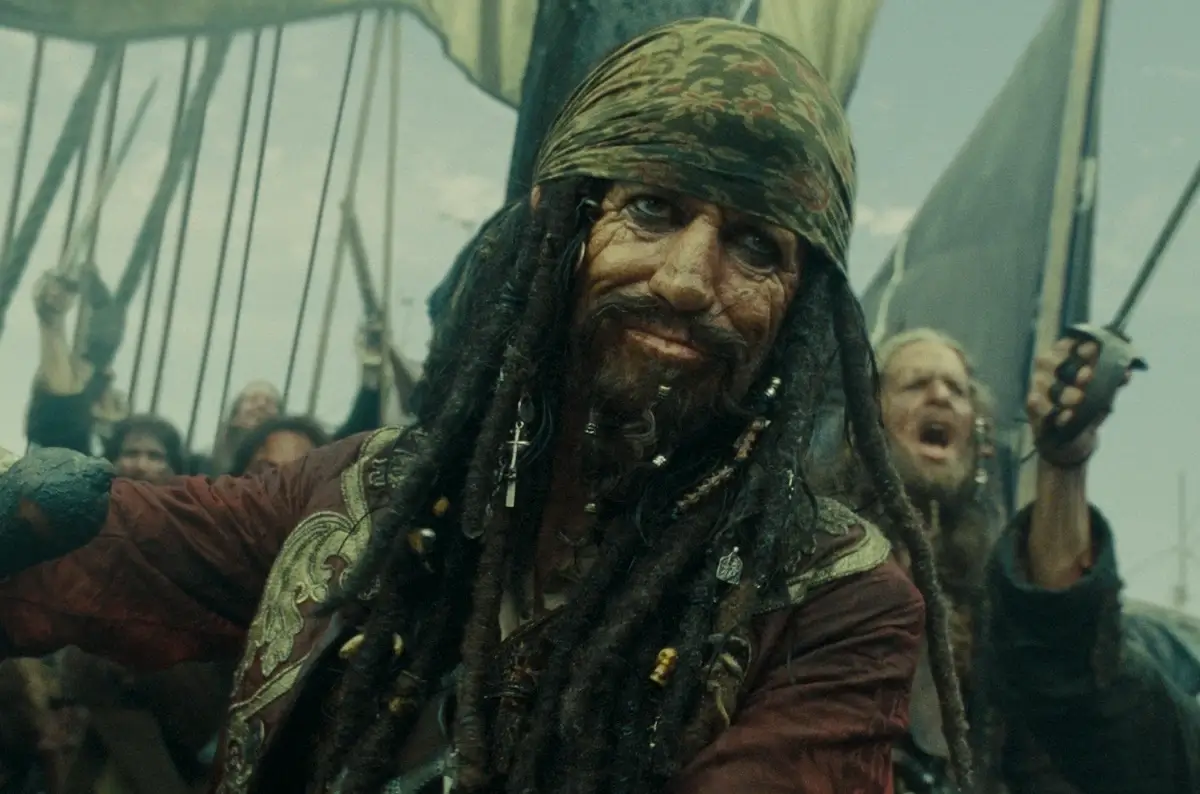
Image: scorpiolikeyou.com
28. The Legacy of Pirates in Film
“Pirates of the Caribbean” has left an indelible mark on the legacy of pirate films. The series reinvigorated a genre that had been adrift, combining high-seas adventure with supernatural elements. It has inspired a new wave of pirate stories, contributing to the lore that has captivated imaginations since the golden age of piracy.
The franchise’s success has ensured that pirate films remain a vibrant part of cinema’s treasure chest, with its influence seen in subsequent movies and shows that seek to capture the same swashbuckling spirit.
FAQ
Was there a real ‘Black Pearl’ ship?
No known ship called the Black Pearl is recorded in historical pirate logs or naval records. The Black Pearl in the movie franchise is a fictional creation, inspired by a combination of different historical ships and pirate legends.
How did Johnny Depp come up with Jack Sparrow’s character?
Johnny Depp drew inspiration from several sources to create the character of Jack Sparrow. He has cited Rolling Stones guitarist Keith Richards and the cartoon character Pepe Le Pew as major influences on Sparrow’s mannerisms and personality.
Are the sea battles in the films realistic?
While “Pirates of the Caribbean” aims to entertain and uses creative license for dramatic effect, the films did consult with naval historians to add elements of realism to the sea battles, particularly in the choreography of ship movements and combat tactics.
What kind of training did the actors undergo for their roles?
The main cast underwent various types of training to prepare for their roles. This included sword fighting, ship handling, and, for Orlando Bloom, further archery lessons to add to the skills he had previously acquired.
Has ‘Pirates of the Caribbean’ affected modern views of pirates?
Yes, the “Pirates of the Caribbean” films have significantly shaped contemporary pop culture’s perception of pirates, blending historical pirate lore with fantasy elements to create a romanticized image of pirate life that differs from the historical reality.


